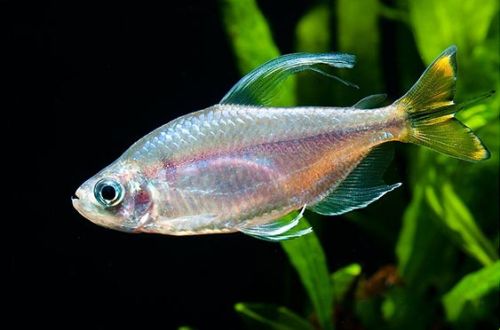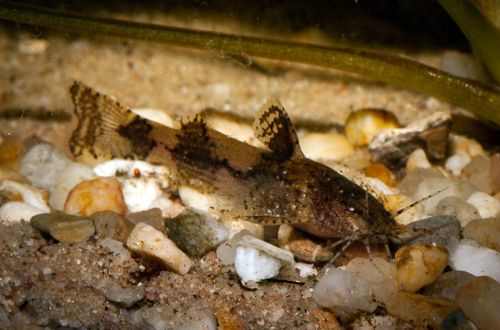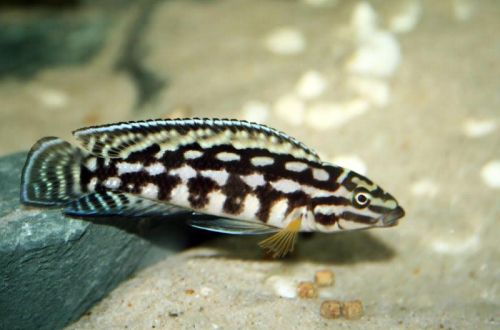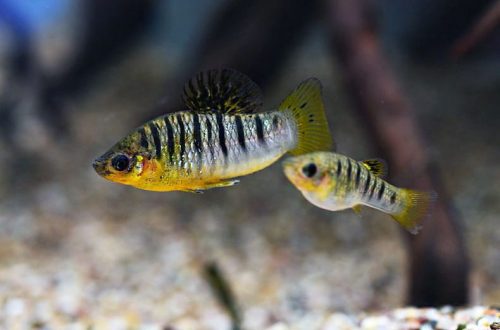
Congo Golden
Yellow-tailed Congo or Congo Golden, scientific name Alestopetersius caudalis, belongs to the Alestidae family. This species is probably not as widespread as other African tetras, but is nevertheless commercially available. Considered easy to keep and breed, perfectly compatible with other fish of comparable size.

Contents
Habitat
It comes from the African continent from the lower basin of the Congo River from the territory of the states of the same name of the Congo and the Democratic Republic of the Congo. Inhabits streams and small rivers flowing into the main channel. It prefers regions with a calm current, dense aquatic vegetation and various snags; troughs serve as shelter from numerous predators.
Brief information:
- The volume of the aquarium – from 100 liters.
- Temperature – 22-26°C
- Value pH — 5.0–7.5
- Water hardness – 2–15 dGH
- Substrate type – soft sandy
- Lighting – subdued, moderate
- Brackish water – no
- Water movement is weak
- The size of the fish is 5–6 cm.
- Feeding – any food of suitable size
- Temperament – peaceful
- Keeping in a group of 8-10 individuals
Description
Adults reach a length of 5–6 cm. Males are somewhat larger and have a silvery color. A distinctive feature is the elongated dorsal and anal fins with white edging. Tail with yellow markings. Females are somewhat smaller, the main color is yellowish.
Food
Omnivorous species, accepts most popular foods of suitable size, designed for aquarium fish. The daily diet may consist exclusively of dry foods such as flakes, granules.
Maintenance and care, arrangement of the aquarium
The optimal size of an aquarium for a flock of 8-10 fish starts from 100 liters. The design is optional at the discretion of the aquarist. However, Congo Golden will look best in a setting that resembles its natural habitat – among snags and thickets of aquatic plants, with sandy bedding. It is necessary to provide free areas for swimming.
Successful long-term maintenance depends on a number of conditions. The most important ones include ensuring stable water conditions and preventing sharp fluctuations in temperature, hydrochemical values and the accumulation of dangerous concentrations of nitrogen cycle products (nitrites, nitrates, ammonia). To achieve this goal, the aquarium is equipped with all the necessary equipment and regular maintenance procedures are carried out: weekly replacement of part of the water with fresh water, timely removal of organic waste (food leftovers, excrement), equipment maintenance, etc.
Behavior and Compatibility
Peaceful schooling fish. It is desirable to maintain a group size of 8-10 individuals; with a smaller number, Yellowtail Congos can become unnecessarily shy. Compatible with other non-aggressive species of cyprinids, African river cichlids, catfish, loaches and others.
Breeding / breeding
Under favorable conditions, spawning is not uncommon. The fish do not show concern for the offspring, moreover, on occasion, they will definitely feast on their own caviar and fry. In the process of spawning, the fish scatter their eggs among the thickets of plants. To ensure their safety, fertilized eggs are transferred to an isolated tank with identical water conditions. This separate aquarium is equipped with a simple airlift filter with a sponge, a heater and a simple lighting system. Registration is not necessary, if desired, you can use a few unpretentious plants, mosses and ferns or their artificial counterparts.
At first, fry are able to eat only microscopic food, such as ciliates, and only after a week are they able to accept larger food – Artemia nauplii or powdered food.
Fish diseases
Diseases inherent in this particular species of fish were not noted. When kept in suitable conditions (high water quality, balanced diet, non-conflict neighbors, etc.), health problems are not observed. The most common cause of disease is the deterioration of conditions leading to immune suppression, which makes the fish susceptible to infections that are invariably present in the surrounding area. When the first signs of an illness are detected (lethargy, exhaustion, refusal of food, lowered fins, etc.), it is necessary to immediately check the main parameters of the water. Often, the restoration of acceptable living conditions contributes to self-healing, but if the fish is too weak or has received obvious damage, medical treatment will be required. For more information on symptoms and treatments, see the Aquarium Fish Diseases section.





